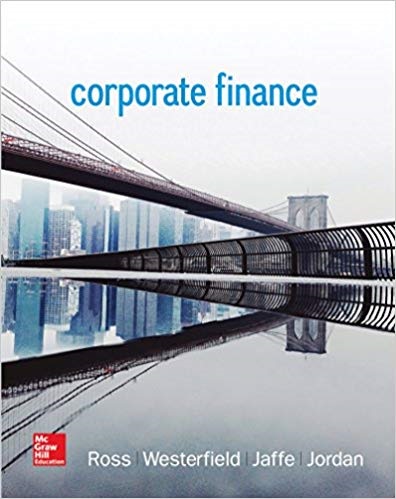Question
As a newly minted MBA, youve taken a management position with Exotic Cuisines, Inc., a restaurant chain that just went public last year. The companys
As a newly minted MBA, youve taken a management position with Exotic Cuisines, Inc., a restaurant chain that just went public last year. The companys restaurants specialize in exotic main dishes, using ingredients such as alligator, buffalo, and ostrich. A concern you had going in was that the restaurant business is very risky. However, after some due diligence, you discovered a common misperception about the restaurant industry. It is widely thought that 90 percent of new restaurants close within three years; however, recent evidence suggests the failure rate is closer to 60 percent over three years. So, it is a risky business, although not as risky as you originally thought. During your interview process, one of the benefits mentioned was employee stock options. Upon signing your employment contract, you received options with a strike price of $40 for 10,000 shares of company stock. As is fairly common, your stock options have a 3-year vesting period and a 10-year expiration, meaning that you cannot exercise the options for three years and you lose them if you leave before they vest. After the 3-year vesting period, you can exercise the options at any time. Thus, the employee stock options are European (and subject to forfeit) for the first three years and American afterward. Of course, you cannot sell the options, nor can you enter into any sort of hedging agreement. If you leave the company after the options vest, you must exercise within 90 days or forfeit. Exotic Cuisines stock is currently trading at $27.15 per share, a slight increase from the initial offering price last year. There are no market-traded options on the companys stock. Because the company has been traded for only about a year, you are reluctant to use the historical returns to estimate the standard deviation of the stocks return. However, you have estimated that the average annual standard deviation for restaurant company stocks is about 55 percent. Because Exotic Cuisines is a newer restaurant chain, you decide to use a 60 percent standard deviation in your calculations. The company is relatively young and you expect that all earnings will be reinvested back into the company for the near future. Therefore, you expect no dividends will be paid for at least the next 10 years. A 3-year Treasury note currently has a yield of 3.8 percent and a 10-year Treasury note has a yield of 4.4 percent.
1.Youre trying to value your options. What minimum value would you assign? What is the maximum value you would assign?
2.Suppose that in three years the companys stock is trading at $60. At that time, should you keep the options or exercise them immediately? What are some of the important determinants in making such a decision?
3.Your options, like most employee stock options, are not transferable or tradable. Does this have a significant effect on the value of the options? Why?
4.Why do you suppose employee stock options usually have a vesting provision? Why must they be exercised shortly after you depart the company even after they vest?
5.A controversial practice with employee stock options is repricing. What happens is that a company experiences a stock price decrease, which leaves employee stock options far out of the money or underwater. In such cases, many companies have repriced or restruck the options, meaning that the company leaves the original terms of the option intact but lowers the strike price. Proponents of repricing argue that because the option is very unlikely to end in the money because of the stock price decline, the motivational force is lost. Opponents argue that repricing is in essence a reward for failure. How do you evaluate this argument? How does the possibility of repricing affect the value of an employee stock option at the time it is granted?
6.As we have seen, much of the volatility in a companys stock price is due to systematic or marketwide risks. Such risks are beyond the control of a company and its employees. What are the implications for employee stock options? In light of your answer, can you recommend an improvement over traditional employee stock options?
Step by Step Solution
There are 3 Steps involved in it
Step: 1

Get Instant Access with AI-Powered Solutions
See step-by-step solutions with expert insights and AI powered tools for academic success
Step: 2

Step: 3

Ace Your Homework with AI
Get the answers you need in no time with our AI-driven, step-by-step assistance
Get Started


